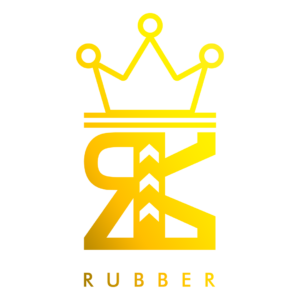Neoprene: The Versatile Compound Material That Enhances Performance in Rubber Products
Neoprene is a synthetic rubber compound that has revolutionized the production of various products in different industries. Its unique properties, such as resistance to chemicals, durability, and versatility, make it an essential material in the manufacturing process of many rubber-based products. Produced by the polymerization of chloroprene, neoprene can be sold as solid rubber or in latex form. Its strength and resistance to degradation surpass natural or synthetic rubber materials, making it well-suited for demanding applications such as gaskets, hoses and corrosion-resistant coatings.
This article will delve into the production process of neoprene and its key properties that enhance performance in different types of rubber-based products. Furthermore, we will explore various commercial applications of neoprene across several industries and variations in foam formulations.
Additionally, we will discuss potential allergies associated with this material and possible alternatives for future developments.
As a versatile compound material that enhances performance capabilities in rubber products, neoprene continues to play a critical role in driving innovation across several industries today.
Overview
The overview section provides a comprehensive introduction to the various applications and properties of neoprene, a synthetic rubber compound widely used in commercial and industrial settings. Neoprene is known for its resistance to chemicals, durability, and ability to resist degradation more than natural or synthetic rubber. It is produced by polymerization of chloroprene and can be sold as solid rubber or in latex form.
One of the benefits of neoprene is its versatility in terms of uses. It is used in various products such as laptop sleeves, orthopedic braces, electrical insulation, liquid and sheet-applied elastomeric membranes or flashings, automotive fan belts, speaker cones, drum practice pads, and hydroponic and aerated gardening systems. The closed-cell form is waterproof, making it suitable for protective clothing for aquatic activities. Neoprene foam also has good soundproofing qualities, making it useful in music studios.
Despite the many advantages mentioned above, neoprene has some limitations. Some people may be allergic to neoprene or experience dermatitis from thiourea residues left from its production process. Another potential disadvantage is that it can be expensive compared to other synthetic rubbers.
In conclusion, neoprene’s flexibility and durability make it an excellent choice for demanding applications such as gaskets and hoses requiring resistance to degradation over time. Its unique properties have enabled it to find use across multiple industries including fashion design through wetsuits made from this material. Manufacturers should weigh up the benefits against any potential drawbacks when considering using neoprene in their products but overall it remains one of the most versatile compounds available today.
Production and Properties
The production of chloroprene polymerization results in a synthetic substance that is highly resistant to chemical agents and possesses superior durability compared to natural or other synthetic rubbers, making it well-suited for use in demanding applications such as gaskets, hoses, and corrosion-resistant coatings. The production process can result in neoprene being sold as solid rubber or latex. Neoprene’s resistance to degradation makes it an ideal choice for long-term reliability applications.
Neoprene foam is produced in both closed-cell and open-cell forms. Closed-cell neoprene foam is waterproof, less compressible, and more expensive than its open-cell counterpart. As a result of these properties, closed-cell neoprene foam finds application in protective clothing for aquatic activities, speaker cones, drum practice pads, hydroponic systems, aerated gardening systems and other specialized uses where water resistance is required.
In addition to its physical properties which make it applicable across several industries and domains of application, neoprene also has various benefits over other materials. For example it resists degradation better than natural or synthetic rubbers; it is flexible even at low temperatures; it provides good insulation against electricity; it does not conduct heat efficiently; and finally its ability to repel oils/chemicals helps keep the material clean from contamination. These features significantly enhance performance in rubber products that utilize neoprene as their primary constituent material.
Commercial Applications
With its exceptional resilience to chemical agents and superior durability, the synthetic substance resulting from chloroprene polymerization finds widespread application across industries.
One of the most common uses for neoprene is in manufacturing laptop sleeves, where its ability to resist abrasion and moisture provides excellent protection for electronic devices. Neoprene’s resistance to wear and tear also makes it a popular choice in orthopedic braces, providing support and flexibility to injured joints.
Neoprene’s versatility extends beyond consumer electronics and medical equipment to industrial applications.
Automotive fan belts are often made with neoprene because of their high resistance to oil, grease, and other automotive fluids. Additionally, neoprene is used extensively in electrical insulation due to its excellent dielectric strength. This quality makes it ideal for use in high-voltage cables and power connectors. Finally, liquid membranes made with neoprene provide durable and flexible waterproofing solutions.
In conclusion, neoprene’s range of commercial applications demonstrates the diversity of this versatile material. Its ability to withstand harsh environments while maintaining flexibility has become essential in many products across numerous industries. From laptop sleeves and orthopedic braces to automotive fan belts, electrical insulation, and liquid membranes – neoprene continues to enhance performance in rubber products today.
Foam Variations
Foam variations of this resilient synthetic rubber offer various properties that cater to specific needs, highlighting modern material science’s adaptability and innovative potential. Neoprene foam can be produced in both open-cell and closed-cell forms, each with unique attributes.
Open-cell neoprene foam is more compressible, breathable, and lightweight, making it ideal for cushioning applications like padding or seals. On the other hand, closed-cell neoprene foam is waterproof, less compressible, and has superior thermal insulation and sound-absorbing capabilities.
To emphasize the advantages of different types of neoprene foam more clearly, here are a few bullet points:
- Open-cell neoprene foam:
- Offers greater breathability
- Is lighter weight than closed-cell foams
- It provides better cushioning properties
- Has a lower cost compared to closed-cell foams
- Closed-cell neoprene foam:
- It is waterproof and hydrophobic
- Provides superior thermal insulation
- Has excellent sound absorption abilities
- Shows higher resistance to compression forces
Due to these varied characteristics offered by different types of neoprene foam products, they are used in several industrial applications like speakers’ cones or wetsuits. Additionally, closed cell-neoprene foams find extensive use in floatation equipment due to their buoyancy properties. In contrast, open cell-neoprene is frequently used as a protective inner lining for orthopedic braces or sports gear due to its exceptional cushioning ability.
The versatility of different forms of neoprene foam makes it an increasingly popular option across multiple industries today.
Potential Allergies
Individuals may experience dermatitis or allergic reactions to thiourea residues in producing certain synthetic rubber compounds, including neoprene. Thiourea is used as an accelerator during the vulcanization process of neoprene, and traces of this chemical can remain in the final product. Symptoms range from mild skin irritation to severe allergic reactions such as hives, swelling, and difficulty breathing.
Prevention is key when it comes to avoiding allergic reactions caused by neoprene. Manufacturers can reduce exposure to thiourea by implementing improved production processes that minimize contamination levels. Individuals with a history of allergies should avoid contact with neoprene products whenever possible or wear protective clothing and gloves when handling them. Additionally, regular washing of hands after using neoprene products can help minimize the risk of developing symptoms.
Treatment for allergic reactions caused by contact with neoprene includes over-the-counter antihistamines and topical corticosteroids for mild cases. In extreme cases, severe reactions require immediate medical attention, including epinephrine injections and hospitalization. Management involves identifying sources of exposure to thiourea and minimizing contact as much as possible through personal protective equipment (PPE) use or choosing alternative materials if necessary.
In summary, while neoprene is a versatile material widely used in various industries due to its durability and resistance properties, individuals should be aware of potential health concerns related to its use. Preventing exposure through improved production processes, PPE use, and avoidance strategies are essential for effectively managing potential allergenic risks associated with this compound material.
Alternatives and Future Developments
The search for novel solutions to mitigate the potential health risks associated with certain synthetic rubber compounds continues as researchers explore alternative materials and improved production processes prioritizing worker safety and environmental sustainability.
The European rubber industry project SafeRubber has identified ethylene thiourea (ETU) as a harmful substance in the vulcanization of polychloroprene, the main ingredient in neoprene. As such, there is a need to develop sustainable solutions that reduce or eliminate the use of ETU in neoprene production.
Innovations in production can also help reduce the environmental impact of neoprene manufacturing. For instance, some companies have started using recycled materials to make their products more eco-friendly. Others are exploring new ways to recycle neoprene foam waste into usable products like yoga mats and insulation.
Such market trends show consumers’ growing demand for sustainable and socially responsible products. While alternatives to neoprene exist, they may not always be practical or cost-effective. For example, natural rubber is biodegradable and renewable but requires large amounts of land and water resources to produce commercially. Additionally, it may not be suitable for applications requiring chemical resistance or durability.
Therefore, future developments must consider the benefits and drawbacks of different materials while balancing economic feasibility with ecological responsibility.
Conclusion
In conclusion, neoprene has become an essential material in various industries due to its resistance to chemicals, durability, and versatility. The polymerization of chloroprene produces this synthetic rubber compound that can be sold as solid rubber or in latex form. Neoprene resists degradation more than natural or synthetic rubber, making it well-suited for demanding applications such as gaskets, hoses, and corrosion-resistant coatings.
Commercially, neoprene has numerous applications ranging from laptop sleeves, orthopedic braces to automotive fan belts. Additionally, neoprene foam variations have been developed with unique properties suitable for wetsuits and diving gear. However, potential allergies associated with using neoprene are a concern that should not be overlooked.
Researchers are exploring alternatives and future developments in this field as the demand for high-performance materials continues to increase across various industries globally. In essence, the versatility of neoprene enhances performance while minimizing costs in manufacturing processes. Thus like a chameleon adapting to its surroundings, neoprene is changing the game by providing advanced solutions that meet diverse needs across various sectors.

